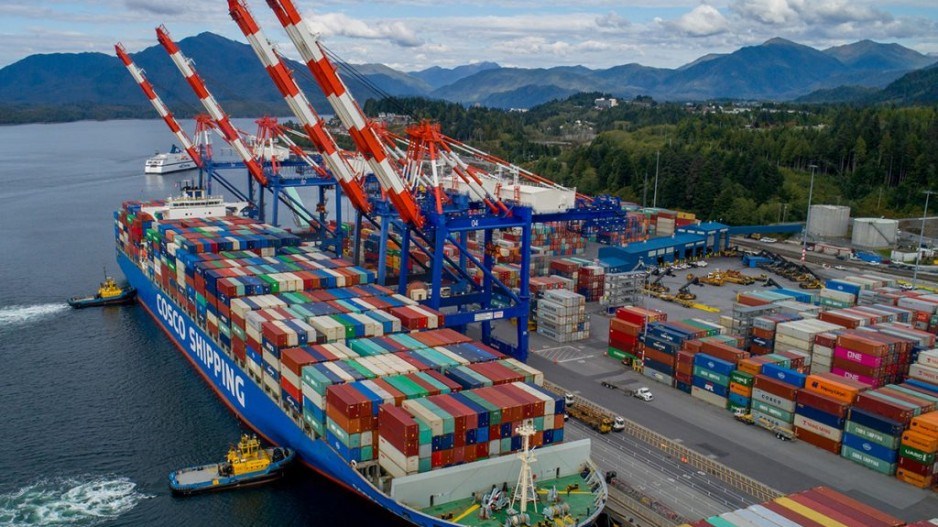The Port of Prince Rupert is not resting on its laurels.
After posting a record-breaking year for cargo volume in the midst of a global pandemic that wreaked havoc on transpacific container traffic and devastated the global economy, the Prince Rupert Port Authority (PRPA) already has its eyes set on another good year in 2021, with an even bigger milestone just beyond the horizon.
“Prince Rupert’s story is just starting,” Shaun Stevenson, the PRPA’s president and CEO, said at this year’s BC Natural Resources Forum. “We are the third-largest port today in Canada, and we expect to be the second-largest within the next decade. That means more capacity for B.C.’s natural resources sectors and more economic opportunities.… There’s a great story before us.”
The ambitious goal of making B.C. home to Canada’s two largest ports by the 2030s has a significant foundation upon which to build. Earlier this month, the PRPA announced that 2020’s cargo volumes broke the record set in 2019. The 9% increase pushed the annual figure of cargo handled through port to 32.4 million tonnes. That volume, Stevenson estimated, facilitated more than $50 billion in international trade. It also represents a doubling of annual cargo volume moved through Prince Rupert, which handled 16.5 million tonnes in 2010.
Montreal, currently Canada’s second-largest port by cargo volume, reported about 40.5 million tonnes in 2019. Vancouver remains the country’s largest port. It handled 144 million tonnes of cargo in 2019.
The spike in cargo volume for Prince Rupert in 2020 came despite the fact that it was the year of COVID, which disrupted the transpacific and other major global supply chains in the spring and resulted in semi-lockdowns in the West during the summer that seriously hampered second-quarter consumer demand.
For Prince Rupert the pandemic created challenges in some sectors but opportunities in others. Its cargo volume spike, for example, was driven largely by coal, propane, wood pellets and other bulk exports.
Prince Rupert’s Ridley Terminal reported a 26% jump in volume driven by thermal coal exports, while wood pellet exports from Pinnacle Renewable Energy’s (TSX:PL) Westview Terminal increased 33%. 2020 was also the first full year of operations at AltaGas Ltd.’s (TSX:ALA) Ridley Island Propane Export Terminal.
Those increases were mitigated by a drop in container cargo handled at DP World’s Fairview Container Terminal, which was down 6% on the year and as much as 19% in 2020’s second quarter. Passenger volume through the port was hit hard by cruise ship cancellations and declining BC Ferries ridership. It dropped to 25,836 last year from 79,441 in 2019.
But Stevenson noted that increased energy and resources demand in Asia will continue to drive bulk cargo volume through the port in 2021 and will be a key market for the port. That means leveraging Prince Rupert’s deep-sea harbour, its proximity to Asian ports compared with other West Coast North American ports and its uncongested connection via rail to the continent’s transportation grid and key freight hubs such as Chicago and Memphis.
Stevenson added that a number of capital projects remain on the near horizon. They include DP World’s recently approved Fairview Terminal expansion and Vopak Pacific Canada’s potential investment in a new bulk storage/marine berth at Ridley Island for liquefied petroleum gas and other fuels.
The increased container port capacity has garnered some attention in Metro Vancouver, as the Vancouver Fraser Port Authority continues its controversial bid to expand its container port capacity at Delta’s Roberts Bank with Terminal 2. Opponents to the $3 billion project point to Prince Rupert’s Fairview as an alternative that would render the Port of Vancouver’s project unnecessary.
But Stevenson was quick to note that the container capacity of both West Coast Canadian ports is needed to maintain Canada’s competitiveness with U.S. ports for transpacific business.




